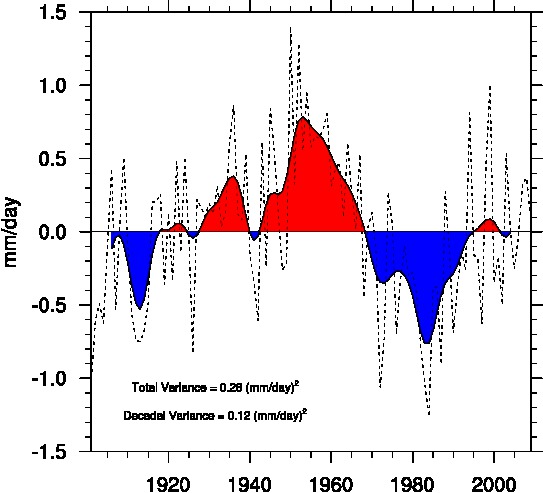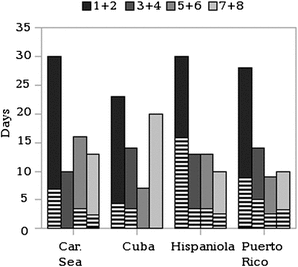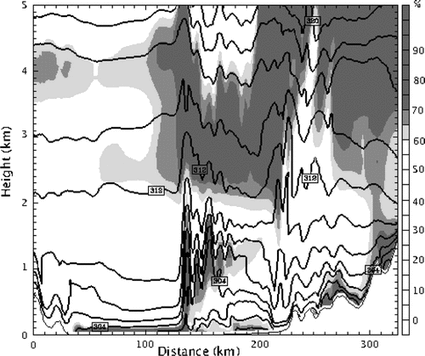Global climate models (GCMs) are known to struggle with simulation of rainfall, especially in the tropics. However, predictions of rainfall are often essential for users of climate data (e.g. water managers, agriculture, policy makers). Our research goals are to further our knowledge of rainfall – climate interactions and variability through the use of past and future model simulations and to provide a means to assess the reliability of future climate predictions in the tropics and subtropics.
To achieve these research goals the research group uses an observational and multi-model approach to assess the successes and failures of GCMs in simulating weather - climate interactions and variability in order to improve model simulations and our understanding of the mechanisms and processes involved. Current focus is on regions surrounding the tropical Atlantic (Africa and the Caribbean) and the Great Plains, as they are regions with large social and economic impacts of drought and rainfall and large discrepancies in simulation of present day tropical rainfall.
Examples of research undertaken in the climate and climate variability reserach group are shown below.
Decadal Variability in West Africa

Observed multi-decadal fluctuations in West African, and the Sahel in particular, rainfall are some of the most pronounced multi-decadal signals on the globe. Understanding and forecasting such variability would be of great use to those living and working in the region as well as decision makers. Not only are the multi-decadal rainfall fluctuations of high societal impact for those in West Africa, they may also impact Atlantic hurricane and tropical storm activity, of high societal impact for the Caribbean and United States. The aim of this work is to increase understanding of the decadal variability in West Africa using observations and assessing the capability of coupled atmosphere ocean general circulation models in simulating such variability.
Caribbean Precipitation Variability

The Caribbean is one of many regions of the world where it is vital to understand precipitation patterns, variability, and extremes. The low-lying coastal regions of the Caribbean islands are densely populated with development pressure increasing. The region is also vulnerable to many natural hazards that are related to and exacerbated by precipitation, such as hurricanes, earthquakes, mudslides, and drought. There is also evidence that precipitation patterns can influence the spread of dengue fever in the region. Planning, policy, and management of these events are extremely dependent on knowledge of the precipitation of the region. These social and economic reasons provide considerable motivation for increasing and expanding current knowledge of precipitation in the Caribbean in both observations and simulation in global climate models.
Atmospheric Undular Bores

Observations from the 2004 North American Monsoon Experiment (NAME) were used in conjunction with numerical modeling experiments (using WRF) to investigate atmospheric undular bores in the region of the North American monsoon. The WRF model was able to successfully simulate many aspects of the observed atmsopheric bore.


